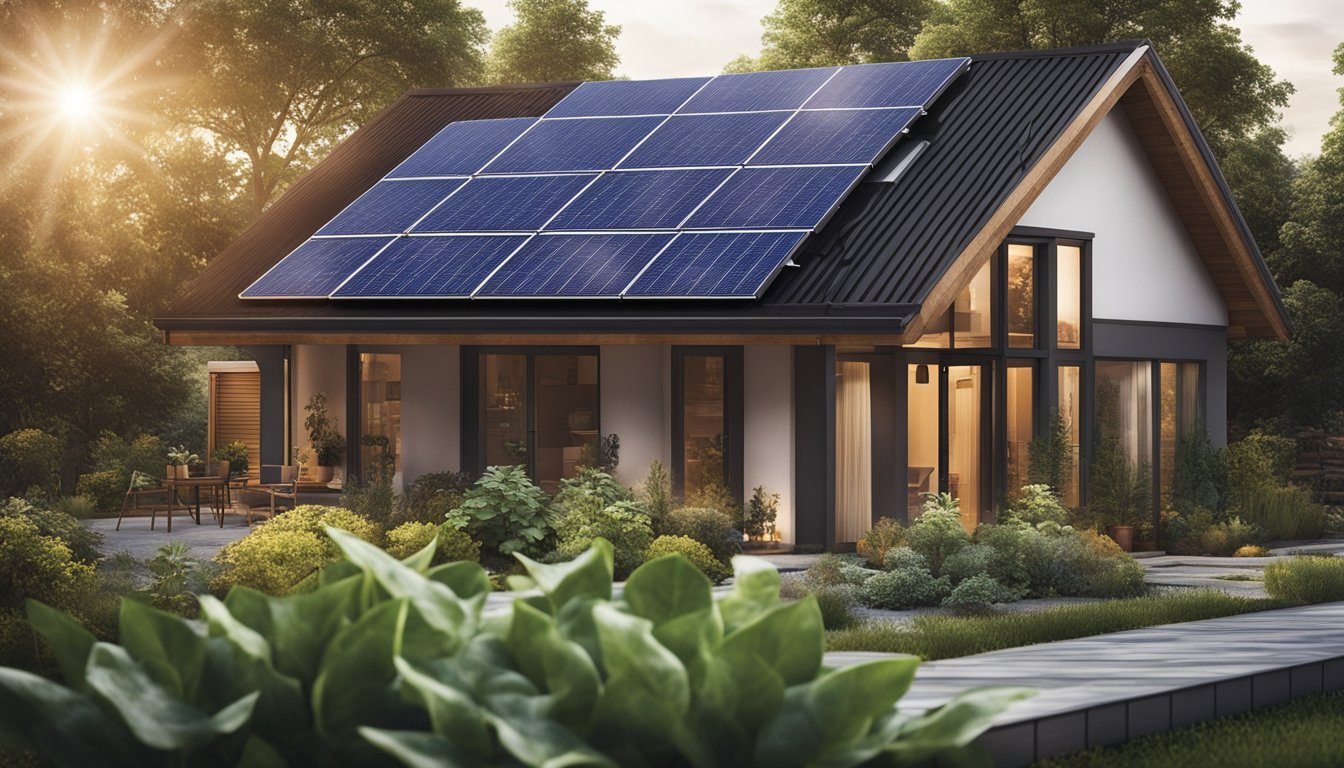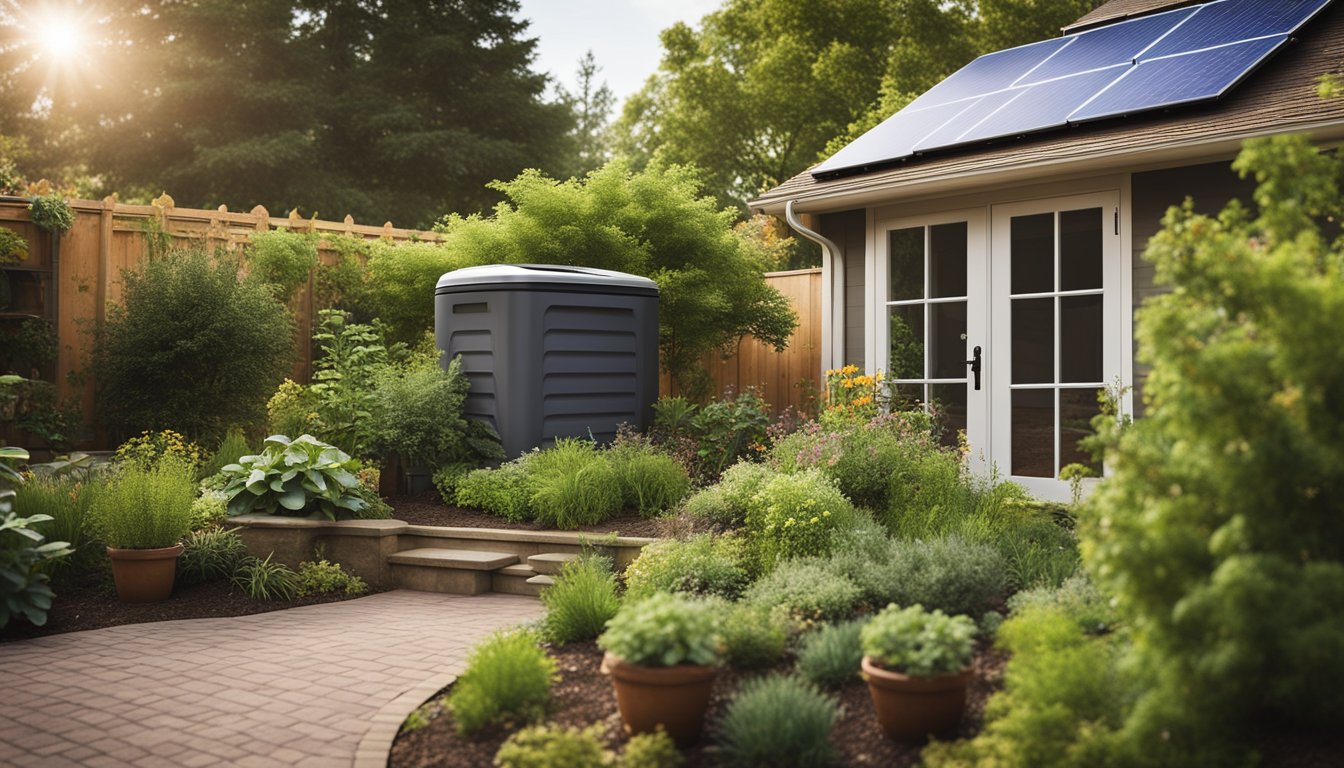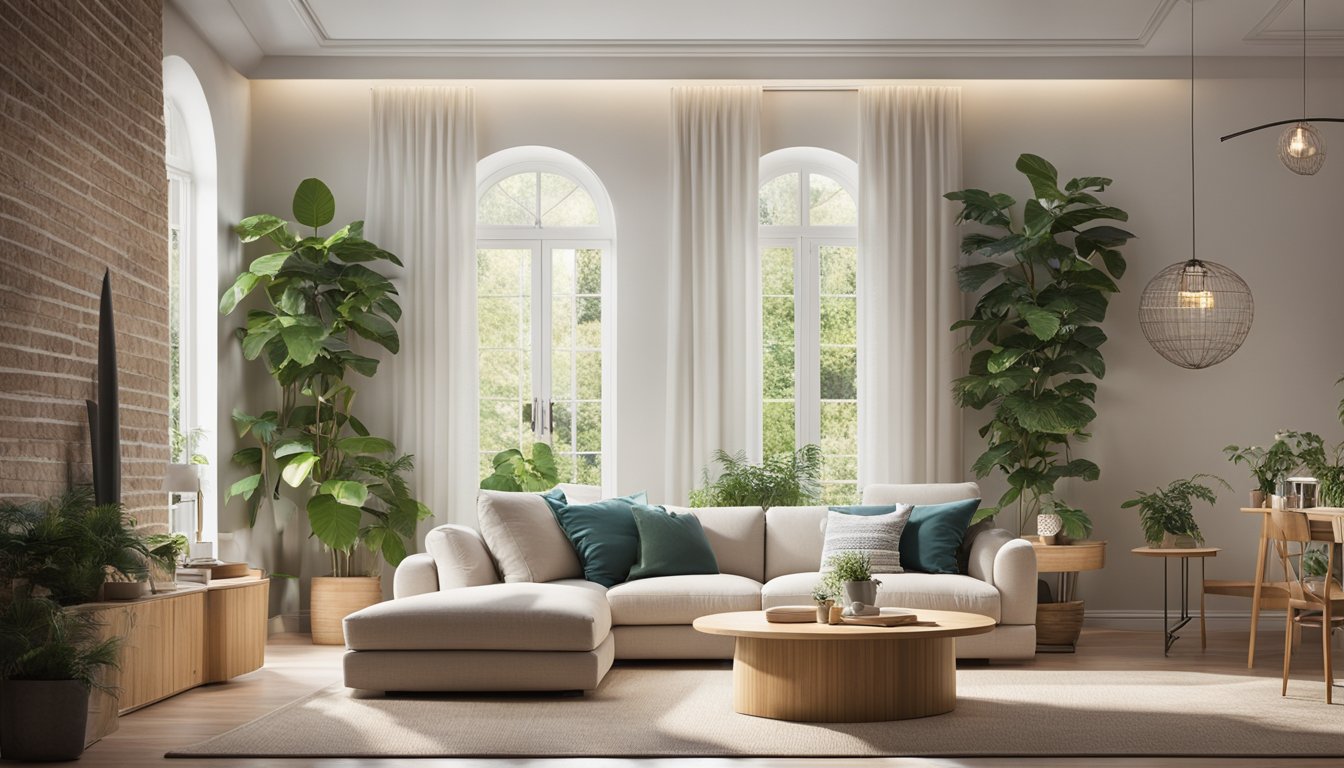Late updated: 12 Apr 2025 08:04
Written by: Daniel Harper
Sustainable Home Renovation Solutions For Beginners: Easy Eco-Friendly Upgrades
Embarking on a sustainable home renovation journey can feel overwhelming for beginners, but it offers significant benefits for both our environment and our wallets. Focusing on eco-friendly practices not only reduces carbon footprints but also enhances energy efficiency, leading to long-term savings on utility bills. Prioritising sustainable materials and energy-efficient upgrades transforms our homes into environmentally friendly sanctuaries while contributing to a healthier planet.

It's essential to assess our home's current sustainability status before diving into renovations. Understanding its energy consumption patterns and pinpointing inefficiencies can guide us in implementing effective changes. Our goal is to utilise renewable resources, maximise natural light, and incorporate technology that supports a greener lifestyle.
By sharing practical strategies and easy-to-follow advice, we'll explore how first-time renovators can make significant impacts with sustainable solutions. Using reclaimed materials, investing in energy-efficient appliances, and optimising insulation are just a few of the many options available. Let's turn our homes into showcases of environmental stewardship without sacrificing style or comfort.
Key Takeaways
- Sustainable renovation saves money and the environment.
- Evaluate current home sustainability for better results.
- Use eco-friendly materials for impactful upgrades.
Assessing Your Home's Current Sustainability

Understanding your home's current sustainability involves evaluating energy consumption, insulation, and ventilation levels. A thorough assessment helps pinpoint areas where improvements are needed, guiding us to make informed upgrades for better efficiency and reduced environmental impact.
Identifying Key Areas for Improvement
We start by looking at key areas: insulation, moisture control, and ventilation. Poor insulation can lead to energy waste, so checking roof, wall, and floor insulation is important. Identify if double glazing is installed to enhance thermal efficiency. Moisture issues can cause damage and affect air quality, so we should inspect for signs of leaks and ensure proper drainage and waterproofing. Adequate ventilation is crucial too, as it ensures fresh air circulation while preventing mould and dampness.
A systematic inspection helps create a renovation plan that addresses these critical areas, increasing sustainability and comfort. Energy audits can also be beneficial by providing data on energy use and pinpointing inefficiencies that need addressing.
Understanding Energy Efficiency Ratings
Energy efficiency ratings give us a blueprint for gauging our home's performance. These ratings measure how effectively a home uses energy through factors like insulation quality, heating systems, and power consumption. Understanding these ratings is essential, as they influence energy bills and environmental footprint.
The Energy Performance Certificate (EPC) is a key tool. It rates homes from A (most efficient) to G (least efficient) based on various criteria, such as heating systems and insulation. By reviewing our EPC, we can identify where improvements can be made to achieve a better rating. This not only enhances energy efficiency but can also increase property value and reduce long-term costs. Efficient appliances and smart energy management systems are also important in optimising energy use.
Implementing Eco-Friendly Renovation Practices
Eco-friendly renovation practices significantly enhance the sustainability of our homes. By selecting appropriate materials and focusing on natural elements, we can reduce environmental impact.
Choosing Sustainable Materials
Incorporating sustainable materials is at the core of eco-friendly renovation. Opting for products like reclaimed wood, bamboo, and recycled metal can dramatically reduce waste. These materials not only lessen the carbon footprint but also add aesthetic value to renovation projects.
Insulation made from recycled denim or sheep's wool can vastly improve energy efficiency. This reduces the need for artificial heating and cooling, providing a more environmentally friendly and cost-effective solution. Moreover, selecting low-VOC paints and finishes helps enhance indoor air quality by reducing harmful emissions.
Let's not forget about flooring. Using renewable options such as cork or linoleum can minimise ecological impacts. By consciously selecting these materials, we contribute to a healthier environment while creating beautiful living spaces.
Enhancing Natural Light and Air Quality
Optimising natural light and ventilation is an essential practice in eco-friendly renovations. This involves designing spaces to maximise daylight entry, which not only reduces dependency on artificial lighting but also enhances the quality of our living environment.
Incorporating large windows and open floor plans allows for better ventilation and increased natural light. This improvement aids in regulating indoor temperatures and can lessen the reliance on air conditioning and heating systems. Additionally, installing energy-efficient glazing ensures that heat retention is maximised without compromising solar gain.
To further improve air quality, proper ventilation systems like heat recovery ventilators (HRVs) can be implemented. These systems help filter out pollutants, ensuring that fresh air circulates effectively. In doing so, they contribute to a healthier and more comfortable home.
Frequently Asked Questions

When embarking on eco-friendly home renovations, it is crucial to understand the essential steps involved. This includes planning, selecting sustainable materials, and prioritising energy-efficient improvements to ensure a successful transformation.
What are the key steps to planning an eco-friendly home renovation?
Planning involves assessing your current home layout and identifying areas for improvement. It's vital to consider energy efficiency, material sustainability, and waste management. Creating a detailed plan helps manage resources effectively and minimise environmental impact.
How can I integrate green building materials into my home update?
Choosing materials like reclaimed wood, recycled metal, and bamboo can make your home renovation greener. Eco-friendly paints and non-toxic finishes further enhance sustainability. We recommend sourcing locally to reduce transportation emissions.
What should I prioritise when making my home more energy-efficient?
Improving insulation is crucial when prioritising energy efficiency. Focus on areas like the roof, walls, and floors. Window upgrades and installing energy-efficient appliances can significantly reduce energy consumption and utility bills.
In what ways can innovative sustainable materials be used in home refurbishments?
Sustainable materials such as hempcrete, cork flooring, and recycled glass can transform spaces. They offer durability and a modern aesthetic. Additionally, these materials often have lower environmental footprints compared to traditional options.
Which aspects of a home renovation are most crucial for improving sustainability?
Improving thermal performance, water conservation, and air quality are key aspects. Utilising passive design principles and renewable energy sources like solar panels can enhance sustainability. Regular maintenance also ensures long-term efficiency.
What costs are associated with eco-friendly home renovations?
Initial costs might be higher due to specialised materials and technologies, but long-term savings often offset the expense. Energy-efficient upgrades reduce utility bills. Incentives or grants may be available to support eco-friendly renovations, offering financial relief.
